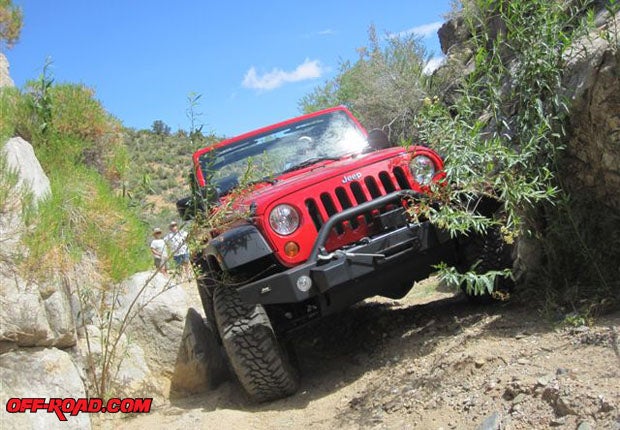
While it may not be ready to compete in the King of the Hammers race—what street-wise Jeep is?—the “Trail King” (a moniker I saddled the Moparized Jeep with to make it easier to talk about) rolls out the dealer’s door ready to tackle any trail this writer has ever seen in nearly 50 years of wheeling. And those trails can be found in such places as the Everglades, Moab, the San Juan Mountains of Colorado, Lucerne Valley of Southern California (the Hammers), and the Sierra Nevada (Rubicon and Dusy-Ershim). I guess if we follow the reasoning behind naming the Rubicon (arguably—up to now—the best all-around Jeep to ever roll off an assembly line), I could have named it “The Dusy,” but that name was already taken by a famous car long before I was born.
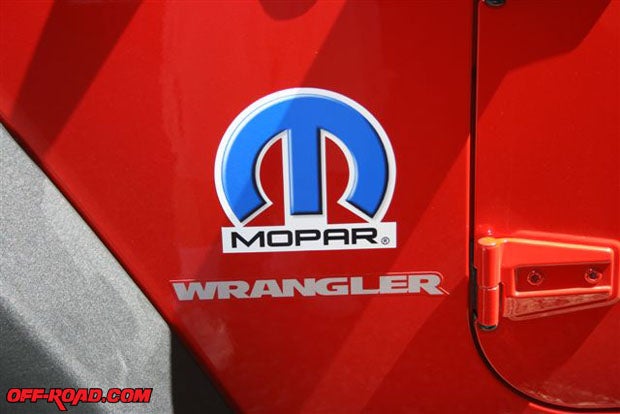
Speaking of the Rubicon, it has to be the basis for the Trail King because of its heavier-duty driveline components—the lighter-weight axles and transfer case of the other JK models would not be able to accept the Trail King’s lower gears and taller tires and still be economically feasible warranty-wise.
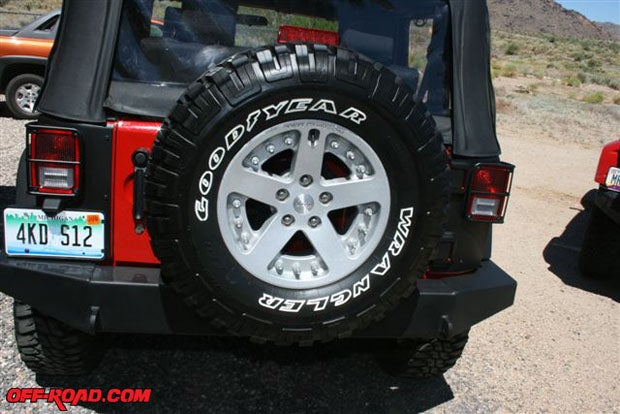
Let’s just see what the Rubicon option group brings to the table. As with all JK Wrangler models, it is powered by a 3.8-Liter V6 Sequential Multi-Port Injection engine, which has 202 horsepower at 5,000 rpm and 237 lb-ft of torque at 4,000 rpm. Wrangler’s Electronic Throttle Control (ETC) system helps prevent the herky-jerky “pedal bobble” that often occurs when in 4WD-low (4LO) mode. ETC’s special off-road calibrations help the driver to “feather in” the throttle over uneven terrain, logs and rocks. The difference is night and day, and is akin to walking vs. bouncing along tough off-road events. The on-demand, two-speed electric fan features a thermally activated circuit breaker for added reliability during off-road driving.
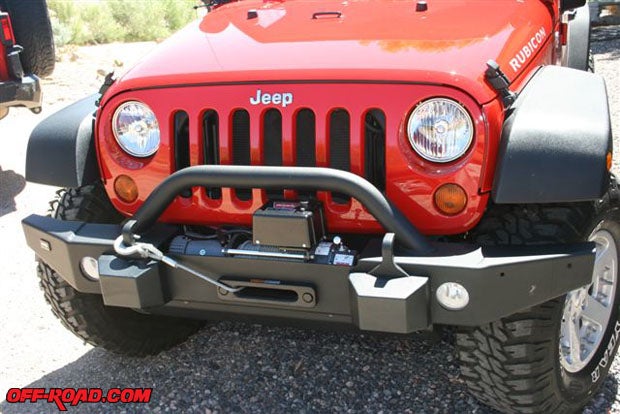
Power is supplied to the Dana 44 axles through either a six-speed manual transmission or a four-speed automatic tranny, which is bolted to the Rubicon’s super-tough Rock-Trac part-time 4WD transfer case, which has a super-slow 4:1 low range gear ratio. A 4:1 low-gear allows a Rubicon to crawl at a lower speed for greater control and multiplies the amount of low-end torque available at the wheels.
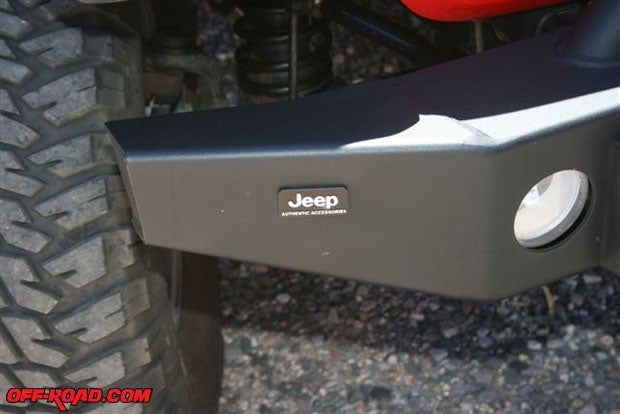
Next Generation Dana 44 heavy-duty solid front and rear axles have larger ring gears, stiffer and stronger housings, and larger pinion bearings to handle added torque requirements. Electronic-locking front and rear differentials—another Rubicon exclusive—lock the left and right wheels together to maintain the forward momentum for the ultimate in Wrangler traction. The instrument panel-mounted rocker switch can lock the rear, the front, or both axles.
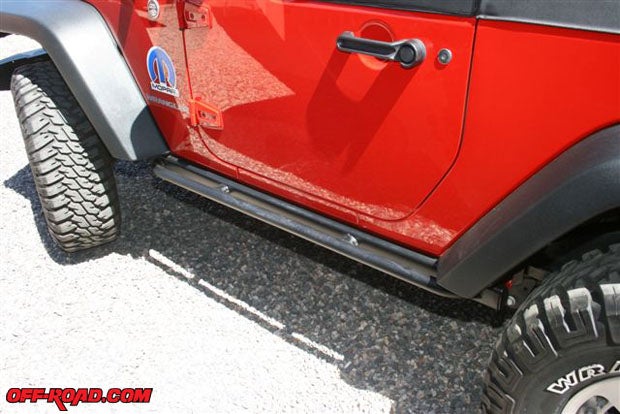
Also exclusive on the Rubicon (and part of its performance suspension), you’ll find an electronic front sway bar disconnect. With the flip of a switch, the front sway bar is disengaged when driving under 18 mph in four-wheel-drive low range. This allows the wheels to drop and compress up to an additional 20 percent for improved front wheel articulation.
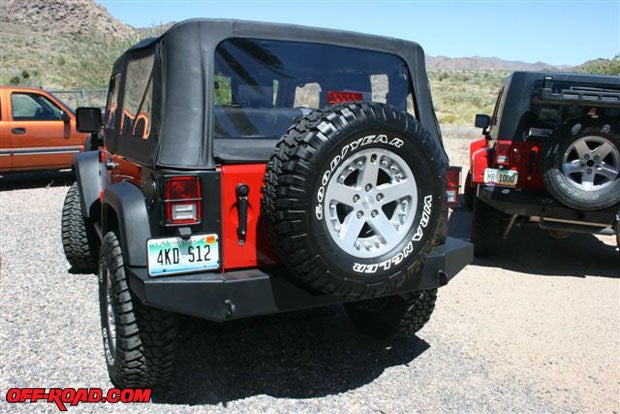
While not exclusive to the Rubicon, Wrangler’s Electronic Stability Program (ESP) should be mentioned here. ESP assists the driver in maintaining vehicle directional stability by applying selective braking and engine control so the vehicle will stay on the intended path. When the intended path does not agree with the actual course, ESP is activated. ESP also helps on low-friction surfaces including wet, snowy, icy, sandy, or gravel roads, and it also helps on hot dry pavement where a thin layer of oil can form, causing the surface to be slick. Wrangler’s ESP features three modes: full-on is the default mode, partial-mode shuts off traction control, and off-mode is ideal for negotiating off-road events.
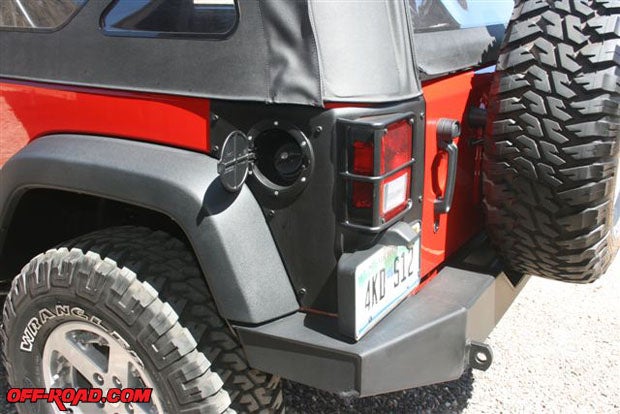
Electronic Stability Program (ESP) by itself helps minimize the chance of a rollover from high dynamic maneuvers, such as a sudden lane change at high speed or radical handling of the vehicle. Electronic Roll Mitigation is an algorithm in addition to ESP control that helps determine when a vehicle is in a potential rollover condition and applies selective braking to prevent wheel lift and help the driver regain vehicle control.
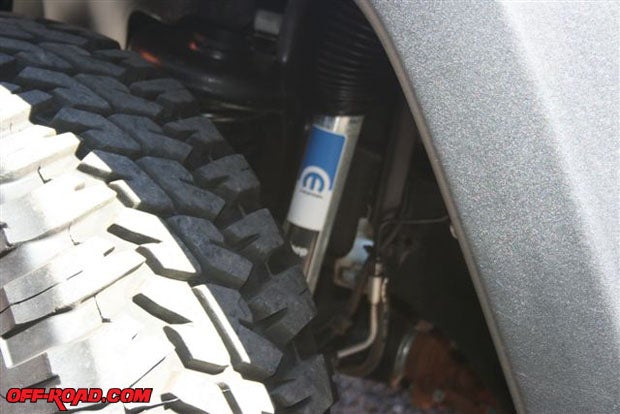
I was going to mention the 17-Inch aluminum wheels and BF Goodrich LT255/75R17 BSW off-road tires with matching spare wheel and tire, but the Trail King is equipped with larger tires and military-grade beadlock wheels so there’s really no reason to go into the Rubicon’s OEM tires and wheels. Suffice it to say that in my opinion, while the larger tires and stronger wheels add greatly to the overall traction and trail worthiness of the Trail King, Rubicon OEM wheels and tires are sufficient until the tires wear out.
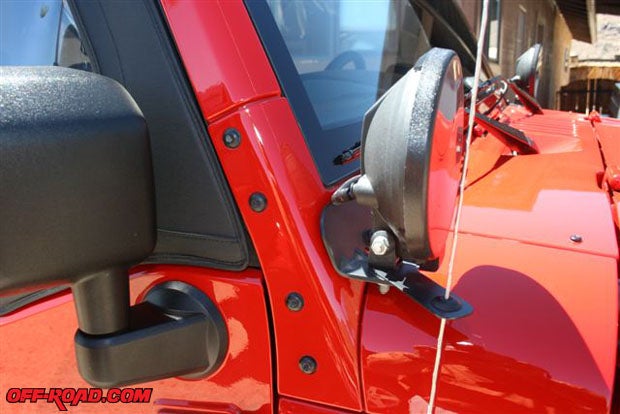
I’m just going to list the additional products that have been added to a Rubicon to make it the Trail King here. Using photos and captions, I’ll explain each item more thoroughly for your consideration. One other thing I want to mention at this time, don’t think that you have to buy a new Rubicon in order to enjoy these improvements. If you already own a JK Rubicon (2007-2011) or are considering buying one, you can order these products at your local dealer and still enjoy the warranty that came with your Jeep. Plus, there is no “Trail King” accessory package, which means that you can order the products one item at a time, or a selected group of them at a time.
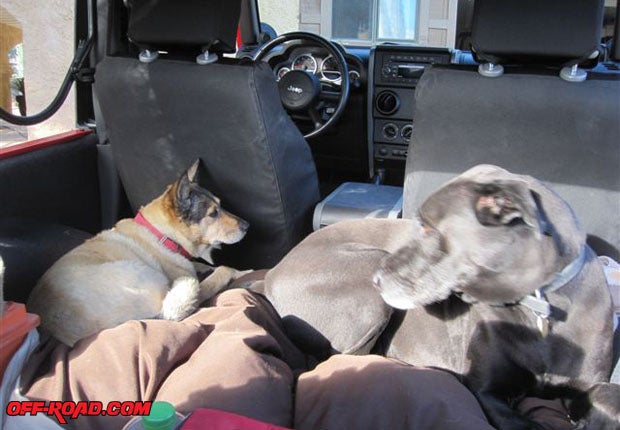
While you’re reading over the following list, remember that the listed prices are per item. Installation labor, shipping (if any), or multiple items are not included—just the individual item’s list price. Mopar off-road bumpers, front ($612) and rear ($558); front skid plate ($254); Warn 9500 XP winch ($1,349); AEV rear corner guards ($402/pair); taillight guards ($132/set); fuel door ($111); rock rails ($572/set); windshield-mounted Hella off-road lights ($125/pair) and mounts ($103/pair); cold air intake ($359); 2-inch lift kit ($1,510); rear differential protective cover ($79); Mopar military-grade wheel ($662); Goodyear 34-inch MT/R tire (no price given); 1-1/2-inch wheel spacers (NPG); and 4.88:1 differential gears (NPG). There are other miscellaneous accessories on the Trail King, such as seat covers, mats, etc., but I haven’t included them here. The total for the Trail King package as you see it in the photos, including the installation charges, is $11,598. (All the items are also available for the Unlimited four-door Rubicon.)
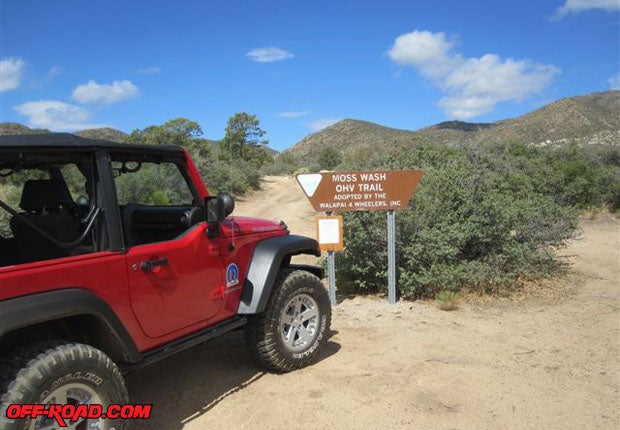
One more thing I wish to mention, we all know that when a vehicle’s differential gear sets and/or tire size is changed, the vehicle’s speedometer reading is changed. With the Wrangler, this means modifying the onboard computer to give a correct speed and mileage record. Jeep dealers cannot correct the computer for tires larger than the 32-inch Rubicon OEM tires, so you’ll have to go to the aftermarket. I recommend the American Expedition Vehicles re-calibration tool; it’s called Pro Cal.
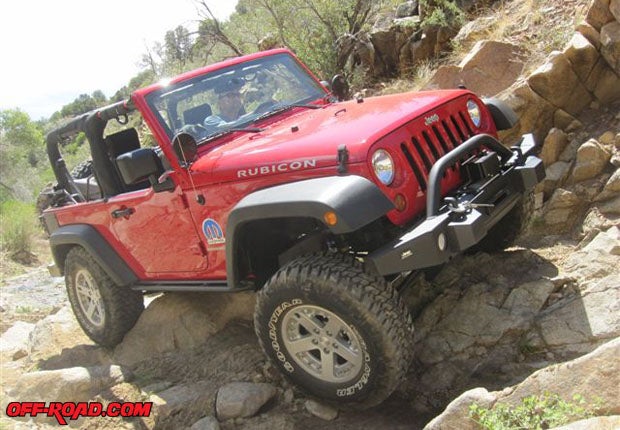
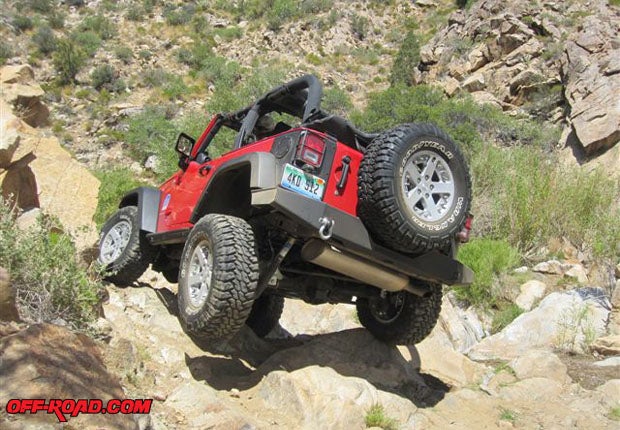
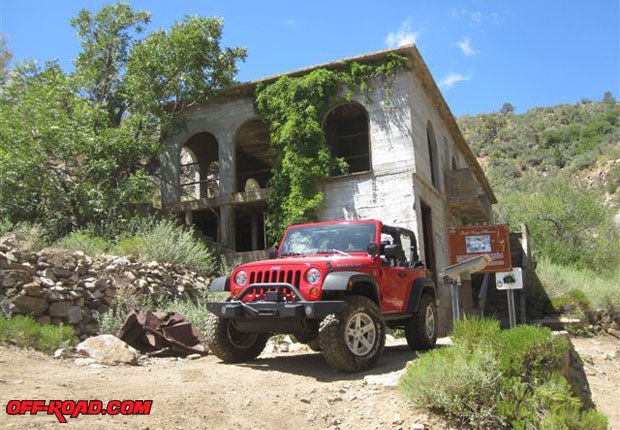
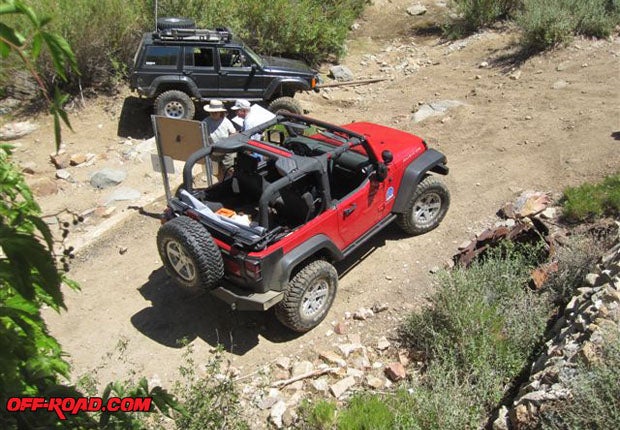


 Your Privacy Choices
Your Privacy Choices